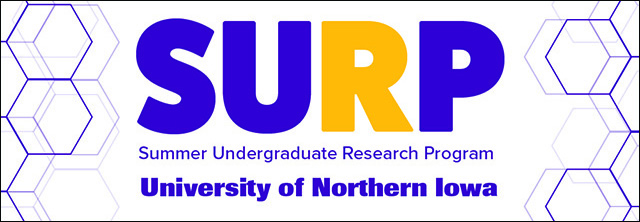
2023 Summer Undergraduate Research Program (SURP) Symposium
Location
ScholarSpace, Rod Library, University of Northern Iowa
Presentation Type
Open Access Poster Presentation
Document Type
poster
Keywords
Cellulose nanocrystals--Properties; Cellulose nanocrystals--Drying; Cellulose nanocrystals--Additives; Glycerin;
Abstract
Nanocellulose is created by breaking down cellulose, the most common organic molecule found in nature. Nanocellulose has attractive properties, such as a very high strength-to-weight ratio, for many different applications. A major challenge is that nanocellulose has a very high shrinkage % (~90%) when it is dried, as well as a strong probability to crack. Different additives can be added in varying amounts to either mitigate or intensify these aspects, as well as affect its drying conditions. This investigation is helping the National Aeronautics and Space Administration (NASA) and the U.S. Army to find a use for this highly renewable polymer resource via its abilities to improve mechanical stability and properties (Duzik et al., 2019). NASA is applying it as reinforcement fibers in structural composites, while the U.S. Army is using it for items such as bulletproof vests and fire-retardant materials. A particular additive, vegetable glycerin, has proven, with concise attention to these different factors, to semi-maintain the shape of a 30ml 15% NC sample with a small amount of the substance (≤ 10% of sample volume) and has a lower shrinkage % than a 15% NC control sample. However, the additive does not do well when it is combined with nanocellulose and layered on different materials, such as types of paper (e.g. cardboard, printer paper, folder paper) to make larger structures, along with higher concentrations of nanocellulose. This work will continue by determining whether glycerin additives can be used to reduce cracking in larger structures through a different method of incorporation.
Start Date
28-7-2023 11:00 AM
End Date
28-7-2023 1:30 PM
Event Host
Summer Undergraduate Research Program, University of Northern Iowa
Faculty Advisor
Timothy E. Kidd
Department
Department of Physics
Copyright
©2023 Elise Hong-Miller, Dylan Seiffert, and Timothy E. Kidd
Creative Commons License

This work is licensed under a Creative Commons Attribution-NonCommercial 4.0 International License
File Format
application/pdf
Recommended Citation
Hong-Miller, Elise; Seiffert, Dylan; and Kidd, T. E., "Impacts and Applications of Vegetable Glycerin on Nanocellulose" (2023). Summer Undergraduate Research Program (SURP) Symposium. 16.
https://scholarworks.uni.edu/surp/2023/all/16
Impacts and Applications of Vegetable Glycerin on Nanocellulose
ScholarSpace, Rod Library, University of Northern Iowa
Nanocellulose is created by breaking down cellulose, the most common organic molecule found in nature. Nanocellulose has attractive properties, such as a very high strength-to-weight ratio, for many different applications. A major challenge is that nanocellulose has a very high shrinkage % (~90%) when it is dried, as well as a strong probability to crack. Different additives can be added in varying amounts to either mitigate or intensify these aspects, as well as affect its drying conditions. This investigation is helping the National Aeronautics and Space Administration (NASA) and the U.S. Army to find a use for this highly renewable polymer resource via its abilities to improve mechanical stability and properties (Duzik et al., 2019). NASA is applying it as reinforcement fibers in structural composites, while the U.S. Army is using it for items such as bulletproof vests and fire-retardant materials. A particular additive, vegetable glycerin, has proven, with concise attention to these different factors, to semi-maintain the shape of a 30ml 15% NC sample with a small amount of the substance (≤ 10% of sample volume) and has a lower shrinkage % than a 15% NC control sample. However, the additive does not do well when it is combined with nanocellulose and layered on different materials, such as types of paper (e.g. cardboard, printer paper, folder paper) to make larger structures, along with higher concentrations of nanocellulose. This work will continue by determining whether glycerin additives can be used to reduce cracking in larger structures through a different method of incorporation.



Comments
High school participant in UNI's Summer Undergraduate Research Program (SURP) supported by funding from the AEOP High School Apprentice Program.